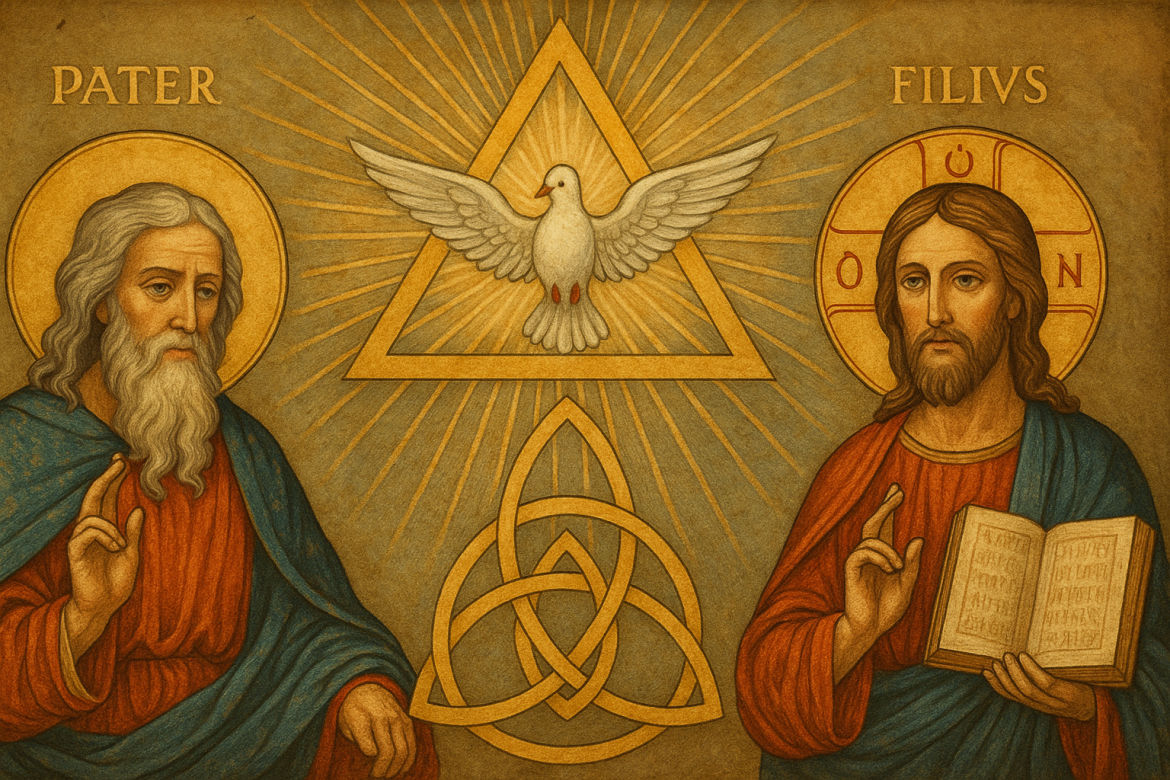Jesus. Heard of Him? That simple question opens up a conversation that touches the very heart of Christian theology. From Sunday school classes to centuries of scholarly debate, the question of who Jesus is—and how He fits within the identity of God—has provoked both passionate devotion and intellectual exploration.
When Wesley Huff was on the @Flagrant2Army @andrewschulz he was asked to articulate the doctrine of the Trinity. Here’s how he attempted to do that in less than five minutes.
Wrestling with the Divine: The Early Church’s Dilemma
Early Christians found themselves asking a profound question: If Jesus is God, and the Father is God, and the Spirit is God—yet the Scriptures insist there is only one God (Yahweh)—how do we make sense of this?
They were not alone in this complexity. Even ancient Judaism acknowledged God’s mysterious unity. For instance, Genesis 19:24 presents a baffling statement: “Yahweh rained fire from Yahweh in heaven.” This dual reference to Yahweh, combined with instances like Abraham’s interaction with “three visitors,” one of whom is called Yahweh, points to a divine complexity already present in the Hebrew Scriptures.
Defining What and Who: The Language of Theology
To navigate this mystery, the Church developed crucial distinctions: “being” and “person.”
- Being describes what something is.
- Person describes who someone is.
For example, a chair has being—it exists—but not personhood. A person has both being and identity. So when applied to God: God is one being (what He is), but exists as three persons (who He is)—Father, Son, and Holy Spirit.
This theological vocabulary didn’t emerge overnight. It took centuries of debates, councils, and contemplation for the Church to hammer out these terms. The result: one God in three persons, co-equal, co-eternal, and consubstantial.
The Son and the Spirit: Not Created, Always Existing
Jesus is called the Son not because He was created or birthed like a human child, but because He exists in eternal relationship with the Father—a relationship of familiarity and love. These are kinship terms, chosen by God to help us understand His inner relational nature.
Similarly, the Holy Spirit isn’t a force or emanation but a divine person who shares fully in the being of God. The early Church recognized this as they saw the Spirit given the same honors, attributes, deeds, and names as the Father and the Son.
Traces of the Trinity in the Old and New Testaments
While the term “Trinity” never appears in Scripture, the concept is everywhere.
Jesus commands baptism “in the name [singular] of the Father, and of the Son, and of the Holy Spirit” (Matthew 28:19), clearly presenting three persons sharing one divine name. Throughout the New Testament, each person of the Trinity performs roles that only God can do—creating, forgiving, indwelling, empowering.
Even rabbinic Judaism wrestled with the presence of God in multiple locations—He reigns in heaven yet is present on Earth, particularly in the Shekinah glory over the Ark of the Covenant. Some traditions explored this in terms like the Shefirot (emanations of God’s presence), which hint at a complex unity within God’s nature.
Why It Matters
This isn’t theological trivia. The doctrine of the Trinity shapes Christian worship, prayer, salvation, and understanding of love. A God who exists eternally in relationship reveals that love is not something God does—it is something God is.
From the burning bush to Pentecost, the Bible tells one story: God making Himself known, not as a distant force, but as a relational, triune being who desires to draw humanity into eternal communion.
Five Things We Learned
- The Trinity is rooted in Scripture – Though the term “Trinity” is not in the Bible, the concept is drawn from many passages in both the Old and New Testaments.
- God is one being in three persons – The Church developed the language of “being” and “person” to express God’s unified yet tri-personal nature.
- Jesus is not merely God’s Son, but God Himself – The term “Son” refers to a relational identity, not a created origin.
- Ancient Judaism hinted at divine complexity – Texts like Genesis 19 and concepts like the Shekinah show a precedent for multi-personal expressions of Yahweh.
- Trinitarian theology shapes Christian life and worship – Understanding God as Father, Son, and Spirit informs everything from prayer to mission.




